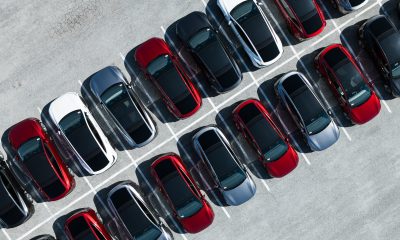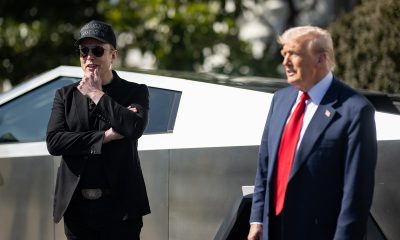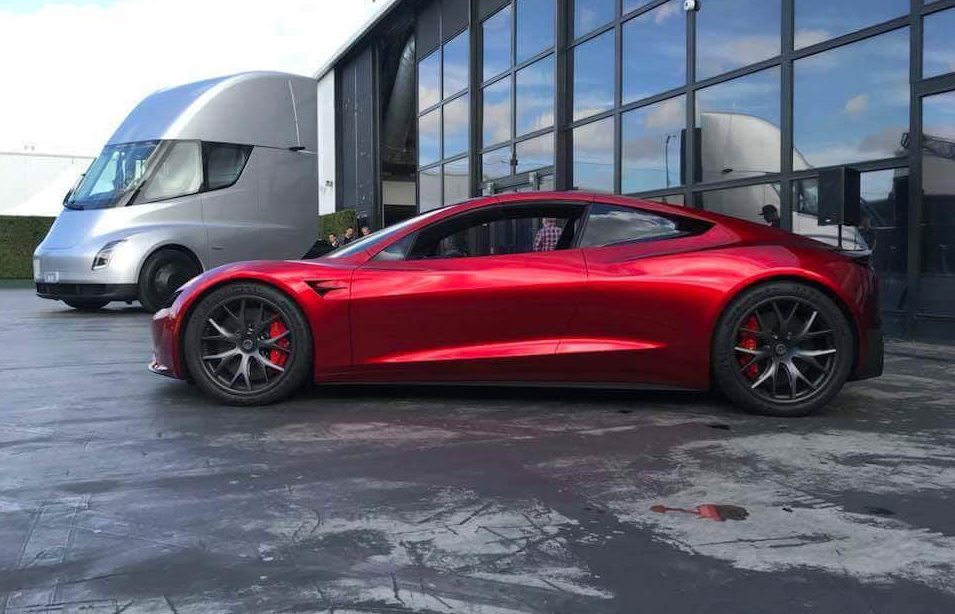

News
Tesla Semi and Roadster could be relying on a “battery breakthrough”
Elon Musk and Tesla have made some bold claims for the new Tesla Semi and Roadster. Those who understand batteries have been scratching their heads trying to figure out how the company can deliver the specs it’s promising – and concluding that the only possible way is some as-yet-unannounced advancement in battery technology.
Musk says the Tesla Semi will be able to haul 80,000 pounds for 500 miles, and recharge to 400 miles in 30 minutes, which would revolutionize the trucking industry. As for the Roadster, its promised 0-60 acceleration of 1.9 seconds effectively shuts down every one of the world’s baddest supercars, and its touted 620-mile range would be double that of any EV produced to date.
However, industry experts are questioning Tesla CEO Elon Musk’s touted range and charging capabilities, saying the specifications defy current physics and battery economics.
According to Bloomberg, analysts at Bloomberg New Energy Finance point out that Tesla Semi’s announced specs would require a battery capacity of between 600 and 1,000 kilowatt hours (6-10 times the size of the largest Model S battery). Using current technology, an 800 kWh battery pack would weigh over 10,000 pounds and cost more than $100,000. That’s just for the battery – Tesla has said its entire truck will start at $150,000. It seems plain that Tesla is counting on falling battery prices to square the circle. “The first Tesla Semis won’t hit the road until late 2019,” Bloomberg points out. “Even then, production would probably start slowly. Most fleet operators will want to test the trucks before considering going all-in. By the time Tesla gets large orders, batteries should cost considerably less.”
It isn’t just the capacity of the battery that’s causing analysts to wear out their calculators – Musk’s claim that the Tesla Semi will be able to add 400 miles of charge in 30 minutes would require a charging system 10 times more powerful than Tesla’s current Supercharger – which is already by far the most powerful in the industry.
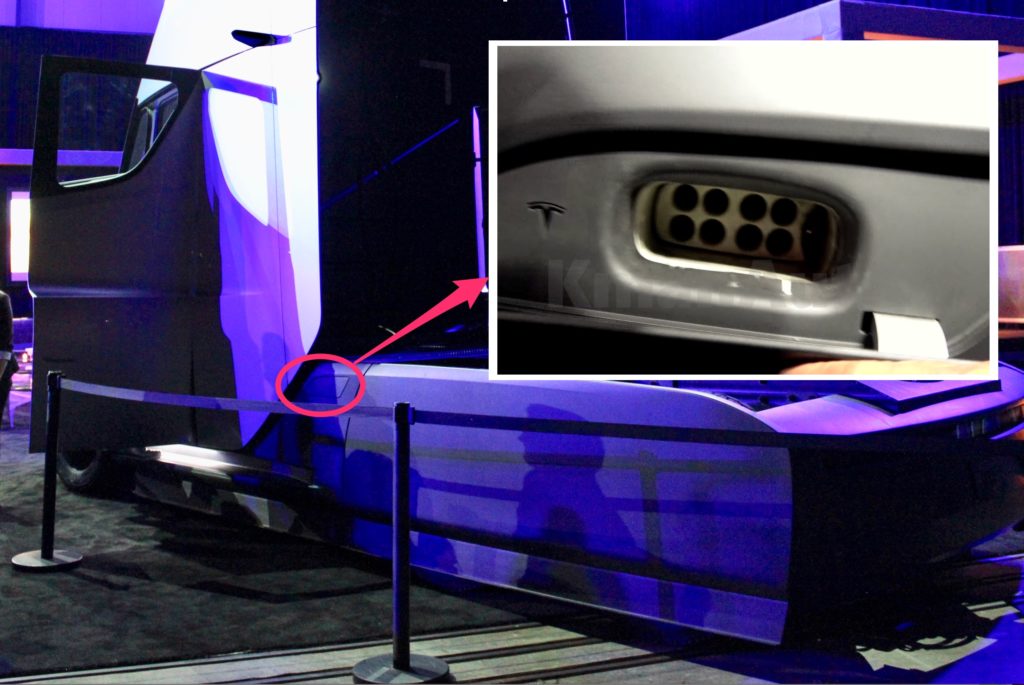
Tesla Semi Megacharger port could support 1 MW of power.
“I don’t understand how that works,” said Bloomberg New Energy Finance EV Analyst Salim Morsy. “I really don’t.” Tesla’s current generation of Superchargers have a power output of 120 kilowatts and can add about 180 miles of range to a Model S battery in 30 minutes. To meet Tesla’s charging claim for the Semi would require the promised Megacharger to deliver an output of at least 1,200 kW.
Perhaps Tesla’s biggest bombshell is the promise that it will guarantee truckers electricity rates of 7 cents per kilowatt hour, which Bloomberg estimates could translate to fuel savings of up to $30,000 a year. Musk says that adding solar panels and battery packs at the charging stations will account for at least part of the cost reduction. However, BNEF’s Salim Morsy insists that Tesla will have to heavily subsidize those electricity rates – he estimates that Tesla will pay a minimum of 40 cents per kWh. “There’s no way you can reconcile 7 cents a kilowatt hour with anything on the grid that puts a megawatt hour of energy into a battery,” Morsy said. “That simply does not exist.”
Of course, that’s no different from what Tesla does for its current Supercharger network, offering free electricity to many customers, while paying almost $1 per kWh to produce it, according to Morsy’s estimate.
And how about that Roadster? To deliver its promised range of 620 miles, it will need a 200 kWh battery pack, twice the size of Tesla’s largest currently available pack. Mr. Morsy predicts that Tesla will stack two battery packs, one on top of the other, beneath the Roadster’s floor.
Even with a double-decker pack however, it’s hard to escape the conclusion that Tesla is counting on improving battery tech to make the Roadster, like the Semi, feasible. Battery density has been improving at a rate of about 7.5 percent a year, and that’s without any major breakthrough in battery chemistry.
“The trend in battery density is, I think, central to any claim Tesla made about both the Roadster and the Semi,” Morsy said. “That’s totally fair. The assumptions on a pack in 2020 shouldn’t be the same ones you use today.”
A massive battery pack not only enables greater range – it’s also a key element in the Roadster’s world-beating 0-60 acceleration. Jalopnik’s David Tracy spoke with battery expert Venkat Viswanathan, a Mechanical Engineering Assistant Professor at Carnegie Mellon, who says that the 1.9-second figure actually seems reasonable.
Viswanathan explains that the power output of a motor is limited by the power draw from each battery cell. Because the Roadster’s pack is double the size, the power draw may not be that much more than that of a Ludicrous Model S.
Viswanathan told Jalopnik that the most modern battery cells offer specific energy of about 240 watt-hours per kilogram. Using that assumption, the Roadster’s 200 kWh battery pack should weigh roughly 1,800 pounds, a huge advance over the previous-generation Roadster. With clever use of lightweight materials, the Roadster could still come out under the nearly two-ton curb weight of the Nissan GT-R, an acceleration benchmark among sports cars.
Viswanathan concludes that a 0-60 time of 1.9 seconds and a range of 620 miles are quite feasible, although there are several other factors that will come into play – much depends on the vehicle’s tires and aerodynamics.
Meanwhile, at least one analyst thinks Tesla’s latest revelations (or claims, or fantasies, depending on your point of view) have implications that go far beyond the Semi and the Roadster. Michael Kramer, a Fund Manager with Mott Capital Management, told Marketwatch that he suspects improved battery capacities and charging times could make their way into all future Tesla vehicles.
“I’d have to imagine that Tesla has figured out how to put this technology on all of their cars, which means every car could get a full charge in under 30 minutes,” Kramer wrote. Once the Model S “is equipped with the 200 kWh battery pack in the new Roadster, which I can’t imagine is too far down the road, the range issue for the Tesla is officially dead.” (Elon Musk has said that Models S and X will not get physically larger packs, but improved energy density could increase capacity while keeping the size of the pack the same.) Someday soon, Kramer says, “The Model S would likely be able to drive further on one charge than a car on a full tank of gasoline.”
===
Note: Article originally published on evannex.com, by Charles Morris
Elon Musk
Tesla begins expanding Robotaxi access: here’s how you can ride
You can ride in a Tesla Robotaxi by heading to its website and filling out the interest form. The company is hand-picking some of those who have done this to gain access to the fleet.
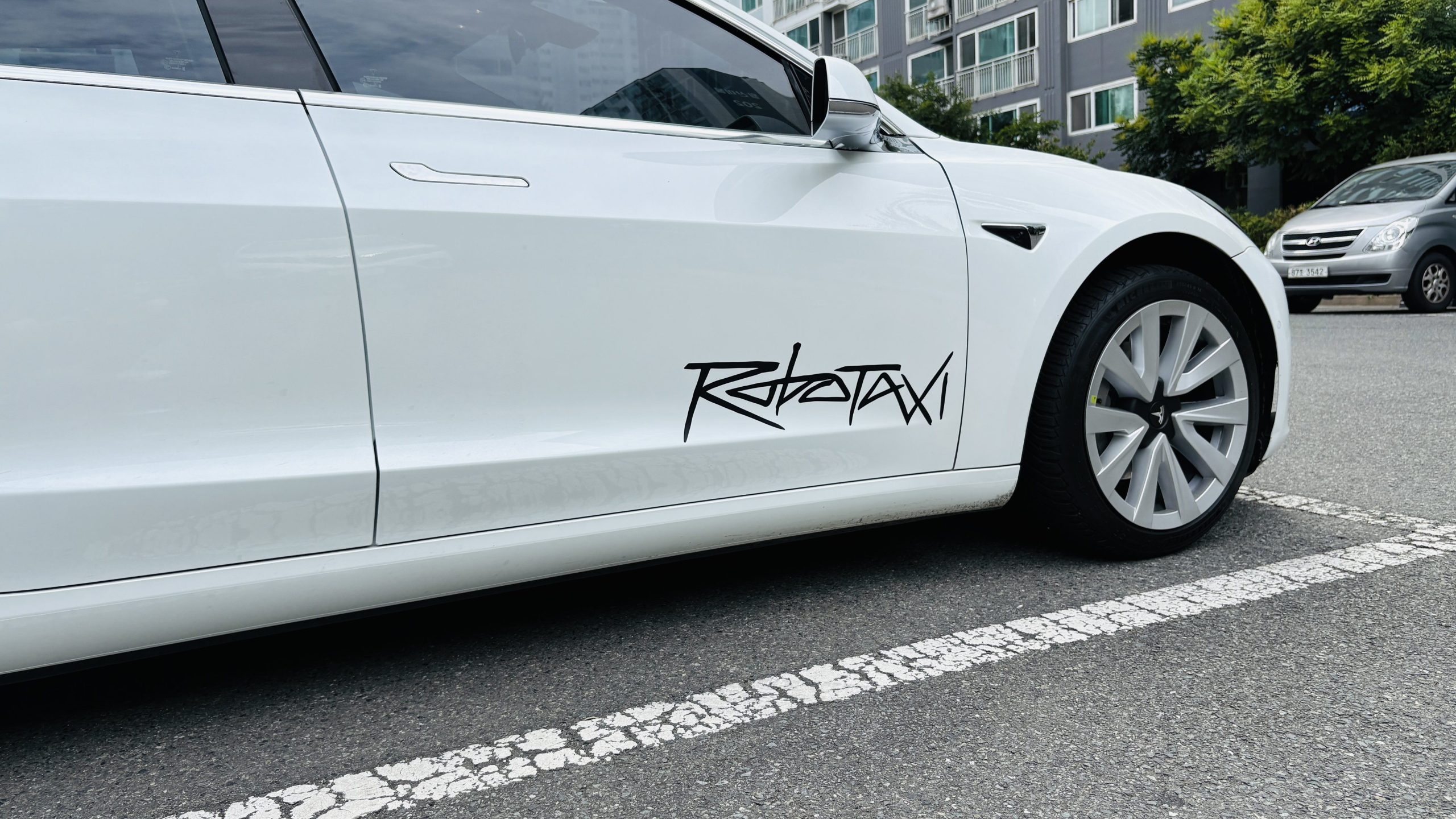
Tesla has begun expanding Robotaxi access beyond the initial small group it offered rides to in late June, as it launched the driverless platform in Austin, Texas.
The small group of people enjoying the Robotaxi ride-hailing service is now growing, as several Austin-area residents are receiving invitations to test out the platform for themselves.
The first rides took place on June 22, and despite a very small number of very manageable and expected hiccups, Tesla Robotaxi was widely successful with its launch.
Tesla Robotaxi riders tout ‘smooth’ experience in first reviews of driverless service launch
However, Tesla is expanding the availability of the ride-hailing service to those living in Austin and its surrounding areas, hoping to gather more data and provide access to those who will utilize it on a daily basis.
Many of the people Tesla initially invited, including us, are not local to the Austin area.
There are a handful of people who are, but Tesla was evidently looking for more stable data collection, as many of those early invitees headed back to where they live.
The first handful of invitations in the second round of the Robotaxi platform’s Early Access Program are heading out to Austin locals:
I just got a @robotaxi invite! Super excited to go try the service out! pic.twitter.com/n9mN35KKFU
— Ethan McKanna (@ethanmckanna) July 1, 2025
Tesla likely saw an influx of data during the first week, as many traveled far and wide to say they were among the first to test the Robotaxi platform.
Now that the first week and a half of testing is over, Tesla is expanding invites to others. Many of those who have been chosen to gain access to the Robotaxi app and the ride-hailing service state that they simply filled out the interest form on the Robotaxi page of Tesla’s website.
That’s the easiest way you will also gain access, so be sure to fill out that form if you have any interest in riding in Robotaxi.
Tesla will continue to utilize data accumulated from these rides to enable more progress, and eventually, it will lead to even more people being able to hail rides from the driverless platform.
With more success, Tesla will start to phase out some of the Safety Monitors and Supervisors it is using to ensure things run smoothly. CEO Elon Musk said Tesla could start increasing the number of Robotaxis to monitors within the next couple of months.
Elon Musk
Tesla analyst issues stern warning to investors: forget Trump-Musk feud
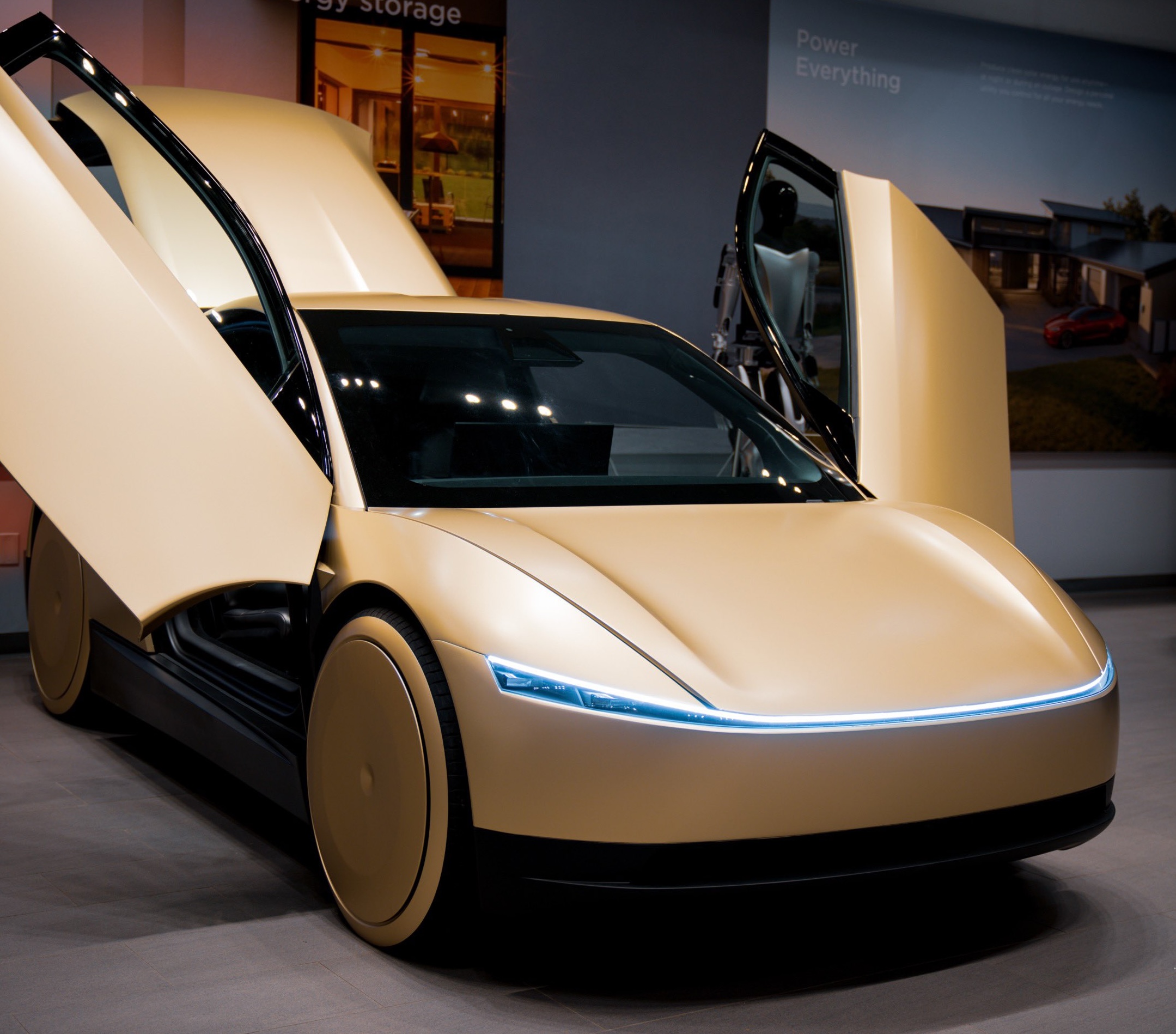
A Tesla analyst today said that investors should not lose sight of what is truly important in the grand scheme of being a shareholder, and that any near-term drama between CEO Elon Musk and U.S. President Donald Trump should not outshine the progress made by the company.
Gene Munster of Deepwater Management said that Tesla’s progress in autonomy is a much larger influence and a significantly bigger part of the company’s story than any disagreement between political policies.
Munster appeared on CNBC‘s “Closing Bell” yesterday to reiterate this point:
“One thing that is critical for Tesla investors to remember is that what’s going on with the business, with autonomy, the progress that they’re making, albeit early, is much bigger than any feud that is going to happen week-to-week between the President and Elon. So, I understand the reaction, but ultimately, I think that cooler heads will prevail. If they don’t, autonomy is still coming, one way or the other.”
BREAKING: GENE MUNSTER SAYS — $TSLA AUTONOMY IS “MUCH BIGGER” THAN ANY FEUD 👀
He says robotaxis are coming regardless ! pic.twitter.com/ytpPcwUTFy
— TheSonOfWalkley (@TheSonOfWalkley) July 2, 2025
This is a point that other analysts like Dan Ives of Wedbush and Cathie Wood of ARK Invest also made yesterday.
On two occasions over the past month, Musk and President Trump have gotten involved in a very public disagreement over the “Big Beautiful Bill,” which officially passed through the Senate yesterday and is making its way to the House of Representatives.
Musk is upset with the spending in the bill, while President Trump continues to reiterate that the Tesla CEO is only frustrated with the removal of an “EV mandate,” which does not exist federally, nor is it something Musk has expressed any frustration with.
In fact, Musk has pushed back against keeping federal subsidies for EVs, as long as gas and oil subsidies are also removed.
Nevertheless, Ives and Wood both said yesterday that they believe the political hardship between Musk and President Trump will pass because both realize the world is a better place with them on the same team.
Munster’s perspective is that, even though Musk’s feud with President Trump could apply near-term pressure to the stock, the company’s progress in autonomy is an indication that, in the long term, Tesla is set up to succeed.
Tesla launched its Robotaxi platform in Austin on June 22 and is expanding access to more members of the public. Austin residents are now reporting that they have been invited to join the program.
Elon Musk
Tesla surges following better-than-expected delivery report
Tesla saw some positive momentum during trading hours as it reported its deliveries for Q2.

Tesla (NASDAQ: TSLA) surged over four percent on Wednesday morning after the company reported better-than-expected deliveries. It was nearly right on consensus estimations, as Wall Street predicted the company would deliver 385,000 cars in Q2.
Tesla reported that it delivered 384,122 vehicles in Q2. Many, including those inside the Tesla community, were anticipating deliveries in the 340,000 to 360,000 range, while Wall Street seemed to get it just right.
Tesla delivers 384,000 vehicles in Q2 2025, deploys 9.6 GWh in energy storage
Despite Tesla meeting consensus estimations, there were real concerns about what the company would report for Q2.
There were reportedly brief pauses in production at Gigafactory Texas during the quarter and the ramp of the new Model Y configuration across the globe were expected to provide headwinds for the EV maker during the quarter.
At noon on the East Coast, Tesla shares were up about 4.5 percent.
It is expected that Tesla will likely equal the number of deliveries it completed in both of the past two years.
It has hovered at the 1.8 million mark since 2023, and it seems it is right on pace to match that once again. Early last year, Tesla said that annual growth would be “notably lower” than expected due to its development of a new vehicle platform, which will enable more affordable models to be offered to the public.
These cars are expected to be unveiled at some point this year, as Tesla said they were “on track” to be produced in the first half of the year. Tesla has yet to unveil these vehicle designs to the public.
Dan Ives of Wedbush said in a note to investors this morning that the company’s rebound in China in June reflects good things to come, especially given the Model Y and its ramp across the world.
He also said that Musk’s commitment to the company and return from politics played a major role in the company’s performance in Q2:
“If Musk continues to lead and remain in the driver’s seat, we believe Tesla is on a path to an accelerated growth path over the coming years with deliveries expected to ramp in the back-half of 2025 following the Model Y refresh cycle.”
Ives maintained his $500 price target and the ‘Outperform’ rating he held on the stock:
“Tesla’s future is in many ways the brightest it’s ever been in our view given autonomous, FSD, robotics, and many other technology innovations now on the horizon with 90% of the valuation being driven by autonomous and robotics over the coming years but Musk needs to focus on driving Tesla and not putting his political views first. We maintain our OUTPERFORM and $500 PT.”
Moving forward, investors will look to see some gradual growth over the next few quarters. At worst, Tesla should look to match 2023 and 2024 full-year delivery figures, which could be beaten if the automaker can offer those affordable models by the end of the year.
-

 Elon Musk2 days ago
Elon Musk2 days agoTesla investors will be shocked by Jim Cramer’s latest assessment
-

 News1 week ago
News1 week agoTesla Robotaxi’s biggest challenge seems to be this one thing
-

 Elon Musk2 weeks ago
Elon Musk2 weeks agoElon Musk slams Bloomberg’s shocking xAI cash burn claims
-

 News2 weeks ago
News2 weeks agoTexas lawmakers urge Tesla to delay Austin robotaxi launch to September
-

 Elon Musk1 week ago
Elon Musk1 week agoFirst Look at Tesla’s Robotaxi App: features, design, and more
-
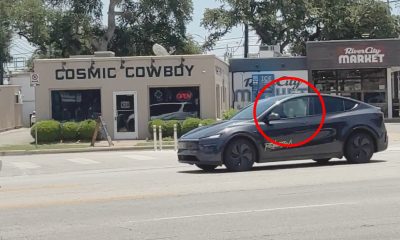
 Elon Musk2 weeks ago
Elon Musk2 weeks agoTesla Robotaxis are becoming a common sight on Austin’s public roads
-
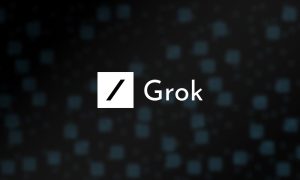
 Elon Musk2 weeks ago
Elon Musk2 weeks agoxAI’s Grok 3 partners with Oracle Cloud for corporate AI innovation
-

 Elon Musk2 weeks ago
Elon Musk2 weeks agoSpaceX President meets India Minister after Starlink approval


